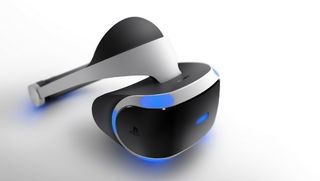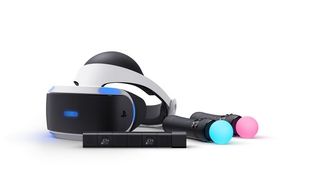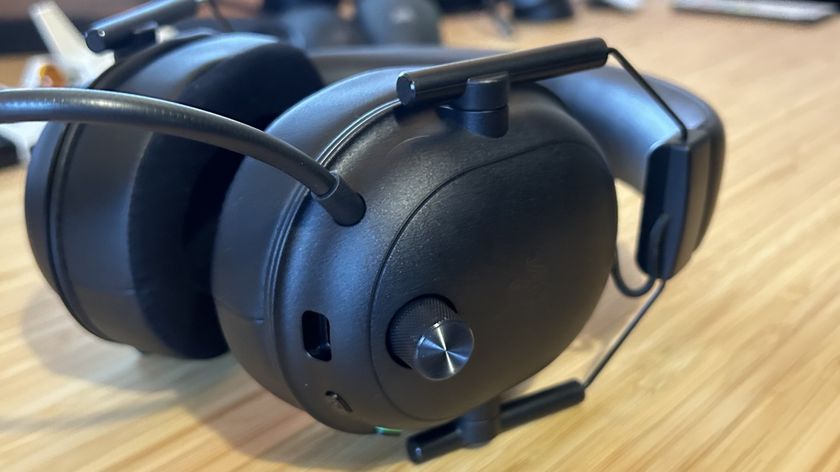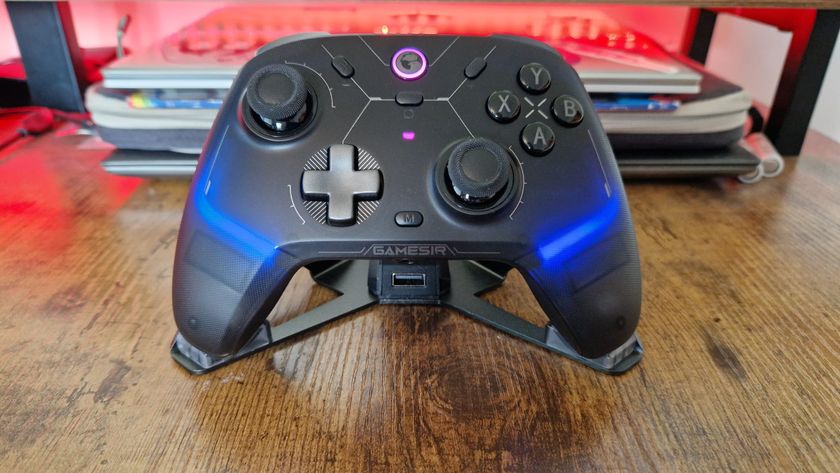Which virtual reality headset is right for you?
We’ve all heard it. ‘Virtual reality, it’s the future.’ There’s no way it doesn’t sound like Red Bull fuelled hyperbole but, after removing each of the big three headsets following my various playtests, I giddily thought those exact words. VR has taken its time - how many Oculus dev kits have we seen now? - but all that development just means that 2016 is going to be a hell of a year when it comes to choosing how you’re going to literally put your head in the game. But which to choose?
I’ve played with Oculus Rift, Steam’s HTC Vive and the ex-Project Morpheus, now PlayStation VR. Each one is vying to be your choice of expensive future headgear. Consider this your ultimate guide to this trio of tech. From controllers to demos, this has you covered. Which headset is right for you? Let's find out. Take a seat. No motion sickness, guaranteed.

PlayStation VR: The facts
Release date: October 2016
Price: £349/$399
Unveiled as Project Morpheus back in E3 2014, the PlayStation VR has the distinct advantage of being readily compatible with your PS4. While it wouldn’t look out of place in a Daft Punk video, those LED lights mean that PlayStation VR boasts full head-tracking courtesy of the PlayStation Camera. In terms of screen, it’s armed with a full HD 1080p LCD display and has a cool 100 degree field of view that’s impressively immersive from the moment you don the headset.
The PlayStation VR will have no shortage of games upon its October release. Sony is making sure this is no repeat of Move and has more than 200 developers working on more than 100 PSVR projects. Games wise, already available for pre-order with the PlayStation VR is jumpy on rails shooter Until Dawn: Rush Of Blood and Gran Turismo Sport but be sure to check our list of the most anticipated PlayStation VR games for more.
In terms of what's in the PlayStation VR box, you can buy the headset standalone for the price of £349/$399 and that comes with your wires and all important processing box. However, you do need a PlayStation Camera to actually use the device so if you don't have one, it's time to invest. There is currently a US only PS VR bundle that can be preordered that includes both a camera and a Move wand.
As an added bonus, PlayStation VR is also tackling the less sociable side of VR by showing the actual gameplay on the TV screen instead of a distracting double eye view. Future games will even involve other players armed only with DualShocks for asymmetric play. The PlayStation VR comes with a demo disc in the box and there'll be a free download of a new version of the Playroom that'll let you play multiplayer games with your less conspicuous looking fellow couch sitters.
Sign up to the 12DOVE Newsletter
Weekly digests, tales from the communities you love, and more

PlayStation VR: The controllers
What do you mean you’ve taken your Move controllers to the charity shop? Get them back. They’re worthwhile now, I promise. Sony was thinking seriously ahead of the times back in 2009 when it designed the Move Wands as 3D motion tracking devices with those iconic (and squishy) colourful bubbles.
While fewer than ten people have ever held two at the same time in the last five years, holding a wand in each hand and donning the headset gives you a couple of key tools. Hands. VR does an exceptional job of convincing your brain that you’re somewhere else entirely, but hand placement takes this to a new level. ‘Of course I’m here’, says your poor subconscious, ‘my fingers are here’.
As you can see in the footage above of Until Dawn: Rush Of Blood, most games will also run with the traditional controller but the Move Wand just adds an extra level of depth that a DualShock just can't touch. The tracking in my Getaway demo was seamless as I loaded a handgun from a bag full of clips and shot at Russian mobsters through the smashed windshield of a van. The Move controls let you squeeze the trigger once to pick up items and interact with the world, and while it’s a simpler setup than the competition, it’s instantly intuitive.

PlayStation VR: The experience
My longstanding memory of PlayStation VR is one of abject terror. And that’s a very good thing. I’d hate to spoil the Kitchen demo, as it’s too good to ruin, in a ‘oh god I’m fastened to a chair in hell’ kind of way, but the level of immersion on offer here is incredible. The PlayStation VR is a powerful headset that doesn’t feel like a subpar experience to its PC counterparts. Despite only sporting one screen - rather than one for each eye like both the Oculus and Vive - the visuals are excellent, and the 360 degree sound experience had me darting my head to find out exactly where the thing hunting me had gone. A clever use of the DualShock as my bound hands, using the lightbar and gyroscope for tracking, was just a taste of the PlayStation VR’s potential to be dangerously immersive. If someone had touched me at any point during my demo, I would genuinely have lost my mind.
The Getaway, part of London Heist, thankfully wasn’t as terrifying but no less impressive. Despite essentially being an on-rails shooter, the experience was utterly immersive, with no sense that the action was really all taking place on a screen. I was a pair of leather gloves holding a gun. I could reload with two hands as the windscreen shattered under heavy gunfire. I was absolutely there. And in Kitchen I wish I hadn’t been.

London Heist will be available later this year as part of the PlayStation VR Worlds bundle from London Studio. It also includes deep sea diving horror game Into The Deep (humming the Jaws theme is totally optional), the terrifying VR Luge, a version of head Pong known as Danger Ball, and the sci-fi Scavenger's Odyssey. Check out the trailer below.
Louise Blain is a journalist and broadcaster specialising in gaming, technology, and entertainment. She is the presenter of BBC Radio 3’s monthly Sound of Gaming show and has a weekly consumer tech slot on BBC Radio Scotland. She can also be found on BBC Radio 4, BBC Five Live, Netflix UK's YouTube Channel, and on The Evolution of Horror podcast. As well as her work on GamesRadar, Louise writes for NME, T3, and TechRadar. When she’s not working, you can probably find her watching horror movies or playing an Assassin’s Creed game and getting distracted by Photo Mode.













